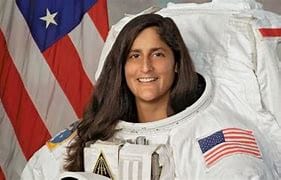
Florida's Tallahassee, March 18, 2025 After an unexpectedly extended mission aboard the International Space Station (ISS)
Florida’s Tallahassee, March 18, 2025 After an unexpectedly extended mission aboard the International Space Station (ISS), NASA astronauts Butch Wilmore and Suni Williams have safely returned to Earth, splashing down in a SpaceX Dragon capsule off the coast of Florida. Due to technical difficulties with Boeing’s Starliner spacecraft, their initial stay of just over a week was extended to nine months.
Last June, Wilmore and Williams, both seasoned astronauts and former test pilots for the U.S. Navy, embarked on a brief test flight aboard Boeing’s Starliner. But after a string of delays due to propulsion system malfunctions, NASA finally included them in its crew rotation timetable. Together with fellow astronauts Nick Hague (NASA) and Aleksandr Gorbunov (Roscosmos), SpaceX’s Crew Dragon ultimately made it possible for them to return.
At 1:05 a.m. ET on Tuesday, the four astronauts disembarked from the ISS and started their 17-hour return trip to Earth aboard their Crew Dragon spacecraft. Before safely splashing down at 5:57 p.m. ET, about 50 miles off the Gulf Coast of Florida, the capsule’s heat shield and parachutes slowed their drop from 17,000 mph to a calm 17 mph as they re-entered the atmosphere.
The excitement of the crew upon landing was summed up by mission commander Nick Hague: * “What a journey! I see an ear-to-ear capsule of smiles. *

Newly elected President Donald Trump pushed for an early return, claiming without proof that the previous administration had ignored the astronauts, after the mission’s delays stirred political debate. In response to the White House’s urgency, NASA expedited safety reviews and accelerated the replacement mission for Crew-9.
Elon Musk, the CEO of SpaceX and a key Trump advisor, also expressed disapproval of the delay, claiming that SpaceX had previously offered a dedicated rescue mission, but the Biden administration had turned it down. Nonetheless, NASA officials insisted that the prolonged stay was determined by staffing requirements, financial limitations, and logistics rather than politics.

Life in Space for 286 Days During their extended mission, Wilmore and Williams contributed to over 150 scientific experiments aboard the ISS, assisting in NASA’s ongoing research on long-term human spaceflight. While their mission was longer than the typical six-month ISS rotation, it fell short of Frank Rubio’s 371-day record, set in 2023. For Williams, this marks her third spaceflight, bringing her total time in space to 608 days—the second most for any U.S. astronaut, following Peggy Whitson’s record of 675 days. Meanwhile, Russian cosmonaut Oleg Kononenko holds the global record at 878 days in space. Reflecting on their mission, Wilmore shared a sentiment of resilience:

Although we intended to remain brief, we arrived ready to stay long. Planning for the unexpected is the essence of human spaceflight.
Now that they are firmly on the ground, the astronauts will return to NASA’s Johnson Space Center for standard medical examinations before spending some well-earned time off with their families.
### What Will Happen to Boeing’s Starliner Next?
Boeing had anticipated that Starliner would be a viable substitute for SpaceX’s Crew Dragon, but the mission’s failures have raised questions about its prospects. Before Starliner is able to transport astronauts on a regular basis, NASA officials intimated that another uncrewed test mission would be necessary.
Boeing has not yet provided a formal answer about Starliner’s next steps, despite posting a congrats message on social media.




